This afternoon I finished reading ‘Sweet Bean Paste’ authored Durian Sukegawa. I first picked up this book last February, and I fell into a slump since then. So, I picked up where I left off. It might be one of the best things I have indulged myself in.
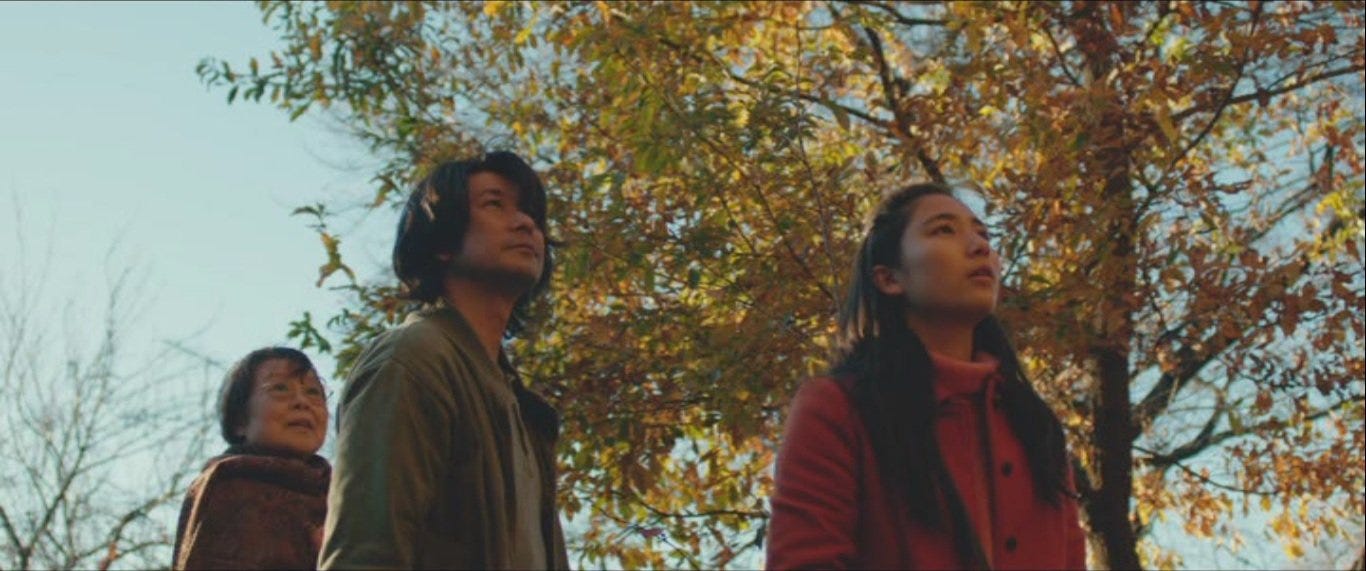
I am watching the film ‘Sweet Bean’ as I write this. And I come to see that the film is coloured the very same gradient as it did when I read the book. Subtle, warm, floral, and bitter.
Dorayaki—a pancake filled with a paste made from boiling mashed red beans and sugar. The taste is usually intended sweet, with a smooth texture, and occassionally with bits of broken beans and bean husk.
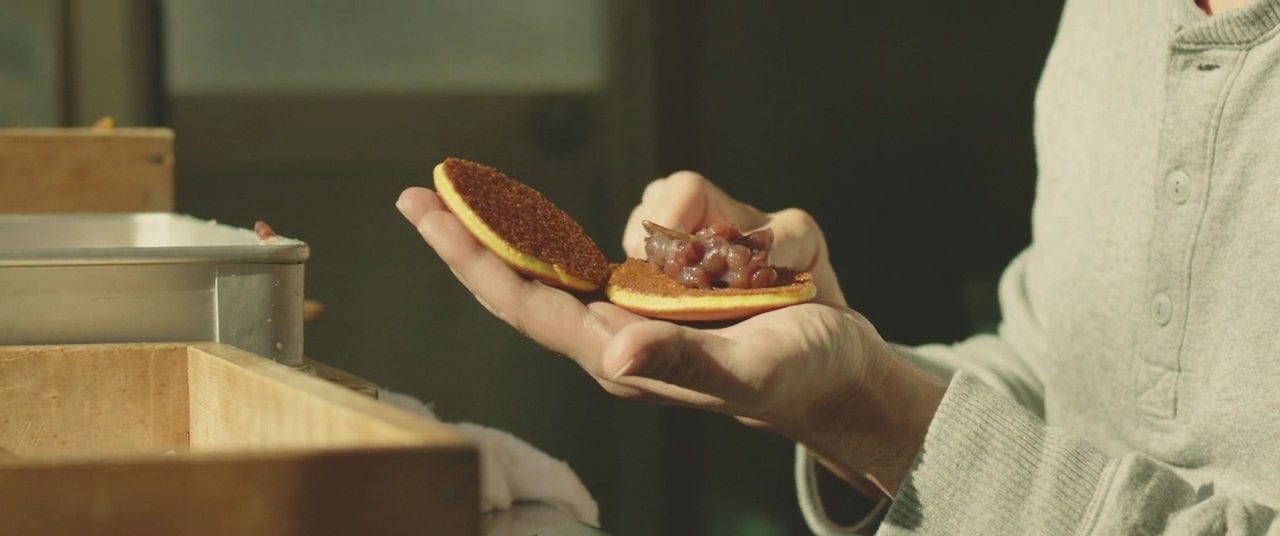
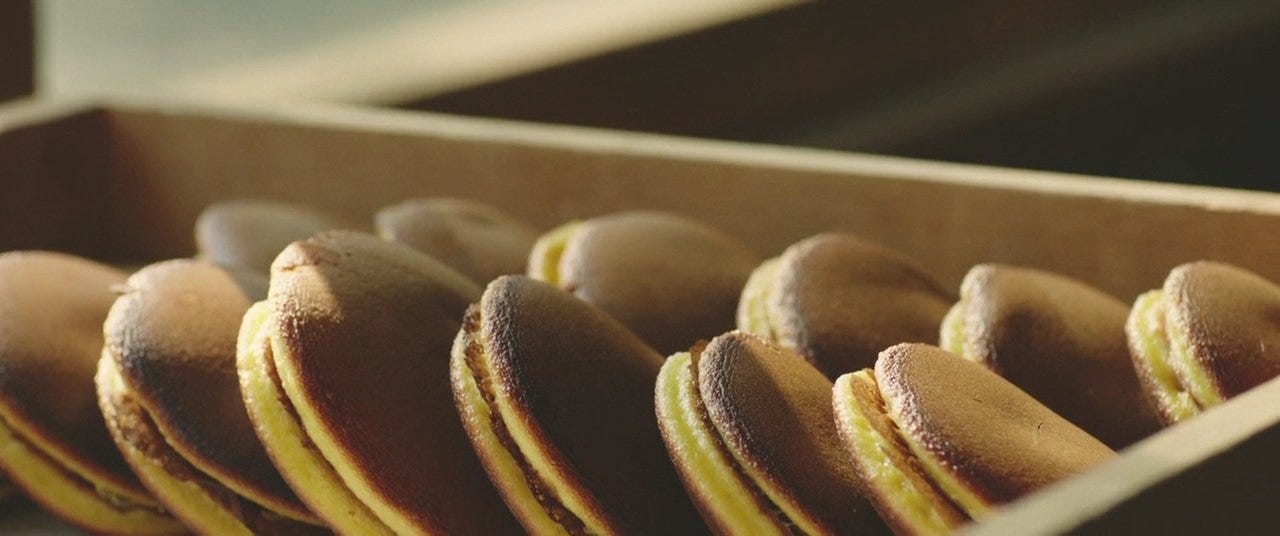
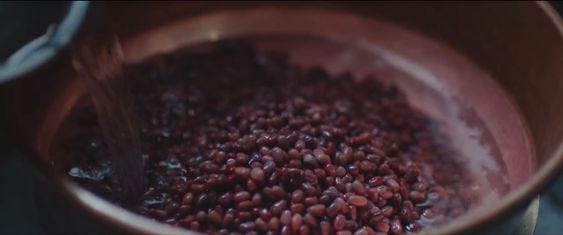
Sweet Bean Paste is a bittersweet tale of life. Human connection, society, and friendships, simmered down to the vibrant red filling of ‘dorayaki’.
Sentaro, a man whose dreams of becoming a writer was dissolved as he became the frontman of ‘Doraharu’, a small confectionery shop selling ‘dorayaki’ to pay off his debts. The story unwinds when Tokue, an elderly woman with crippled fingers and 50 years of experience in making sweet bean paste had offered to work part-time at Doraharu. Sentaro had his doubts, but it all changed after he ate a piece of dorayaki that she had made. The story further unravels as their lives sprawl intertwined as they are joined with Wakana, a teenage girl and a regular at the Doraharu who seem to have ran away from home.
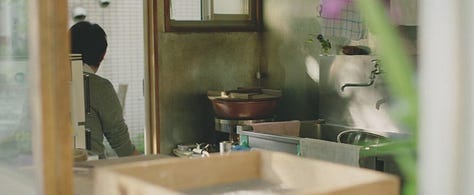
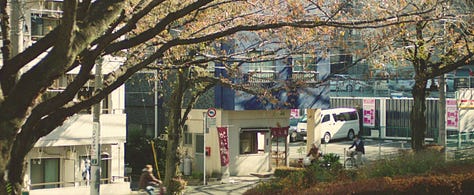

What beguiled me was that this was another proof of how food weaves life to transcend taste and language. It solidifies and memorializes what we have felt in the moment. We do not remember the color of their clothes, the brittle copper of clanky utensils, the bubbling cold water, nor the way they had talked, yet unsurprisingly we remember the taste.
Food as a love language.
How difficult it was whenever I try to recall memories of my young life. If people ever ask how I fancied a bond with my friends, I will tell them about the meals we have shared.
Every morning, my mother wakes up an hour earlier to prepare me lunch. I love her food. It is the best tasting and most earnest meals of my life. I walk to school with a neatly packed lunch bag and a bottle of water. By the time our classes end, Like clockwork, I open my tupperware as they await. I take the spoon, they take the fork, sometimes my mother packs extra pairs of chopsticks, and sometimes we eat with our bare hands. Spam Onigiri was our favorite meal. Because we had each of our own.
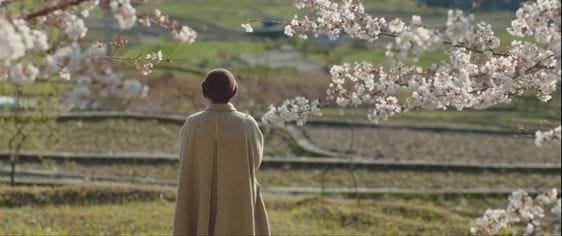
We had shared a meal at a bench under a blooming tree with its leaves raining and cats striding by our sides. Yet my favorite was when the 5 of us would circle our chairs in our classroom. With a dimly lit room and no one else but the five of us. Aside from these, mostly I remember how good the food was. Then I begin to remember how I felt, how I laughed, how I broke a tear, or how mundane the moment was.I once again see our smiles as I reminisce these moments.
I snack while I write this piece, with a bite into a mango sliced cake, I wonder if the person who prepared this has lived a good life.
The story went beyond what I had expected it to be. Reading its preview whispered to me that it would end with another cliché sonnet. I did not expect it would be this profound. I am with guilt to underestimate it.
I wish to only give you a glimpse, the rest is for you to find out. There are so many subjects subtly touched in this tale. It is innocently light, but it will keep you wondering.
To add a bargain, the film encompassed a set of gradients. It opened with a bright scenic color grade. The characters were all casted in a warm light. During the centro of the film, we find that the colours daft into a cooler and much blue-r shade. It allows us to delve into the sudden loss of warmth in the story. Yet despite the turn of events, the film learns to shed warm light once more. A call that the world is as many colours as we know it, and little shifts in our perspective can truly change how we see it.

For instance, Tokue wrote in one of her letters:
One thing I can do in Tenshoen is sniff the wind and listen to the murmur of the trees. I pay attention to the language of things in this world that don't use words.
That's what I call Listening, and I've been doing it for sixty years now.
When I make sweet bean paste I observe closely the colour of the adzuki beans' faces. I take in their voices. That might mean imagining a rainy day or the beautiful fine weather that they have witnessed. I listen to their stories of the winds that blew on their journey to me.
It's my belief that everything in this world has its own language. We have the ability to open up our ears and minds to anything and everything. That could be someone walking down the street, or it could be the sunshine or the wind.
True enough, the red beans had a story to tell. Both Tokue and Sentaro are confectioners of dorayaki, yet there is a great disparity on how they prepare the sweet bean paste. Nonetheless, it only comes to light that as we read through the pages of the book, we not only learn how to make 'dorayaki, but we are also guided through the warm and cool tones of Sentaro, Tokue, and Wakana.
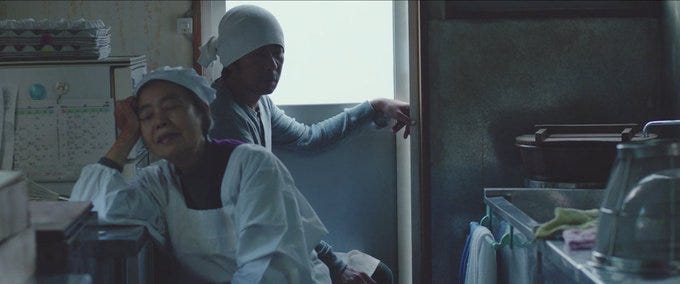

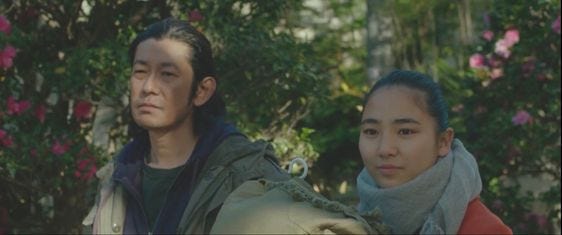
Thus, The book ‘Sweet Bean Paste’ coupled its movie adaptation had redefined ‘hearty meals’. Through the taste of dishes it allows us to feel the scattered memories that we are so afraid of losing. As if it frames each dish as a novel; an artifact; a documentary. Food awaits for someone to take a whiff of its spices, to bite into the crooked briskets of its edges, to indulge into a spoonful of rice.. a meal for the heart.
Much like a piece of dorayaki, life is comprised with a meticulous chapter, adorned with bitter and sweet tones, and a smooth yet bristly texture. It is what makes a good dorayaki, and a good life.
I like to think that every one of us deserves to relish each bite, enveloped with the flavours of youth and life.—It is not always that food has to taste good, but it has to be prepared by someone with a good heart.
We are lucky to have food around. Before we part, I urge you to hear and listen to the language of food. I love listening to whatever story a dish has to tell.
All the love in my heart, Soia.
Thank you for reading. Today I found that ‘food’ is a Seanonym for a good life. I wish we could all gather with a meal under a blossoming tree. But that would be another story to tell, would it not? I would love to have you around. See you on my next one. 🤍



